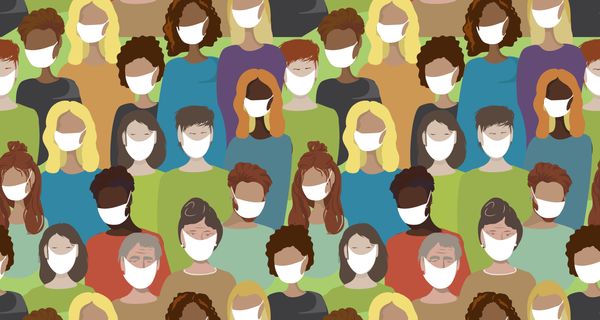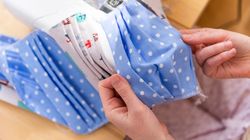A video showing a simulation of someone sneezing near to another person wearing a face shield has revealed exactly how much protection such face covers can offer – and the answer is, not much.
Researchers at Fukuoka University in Japan wanted to better understand what happens to the airflow around a face shield when someone nearby sneezes.
They were particularly interested in sneezes because they produce a fluid phenomenon known as ‘vortex rings’, which lead researcher Fujio Akagi says is “a donut-shaped vortex that is generated by an instantaneous ejection of fluid from a circular orifice” – a bit like bubble rings made by dolphins.
Researchers found when a face shield wearer is exposed to a sneeze from an infected person standing a metre away, the vortex rings generated by the sneeze capture microscopic droplets and transport them to the top and bottom edges of the face shield.
They concluded that face shields alone are not “highly effective” to prevent Covid-19 infection, as aerosols can still be inhaled through the nose and mouth.

On their own, face shields can help protect the wearer from the bulk of larger droplets caused by a cough or sneeze a short distance away, but studies have found smaller aerosols can travel up and underneath the shield.
A study of healthcare workers found wearing a face shield reduced exposure to flu by 96% in the period immediately after a cough – from 18 inches away. But in the context of a smaller aerosol, the face shield was less effective, blocking only 68% of the cough.
In the half an hour period after a cough, during which the aerosol had dispersed throughout the room and larger particles had settled, the face shield was less effective, the study found – with researchers concluding that people wearing face shields can still inhale infectious airborne particles.
“They cannot be used as a substitute for respiratory protection when it is needed,” researchers said of face shields.
Fujio Akagi tells HuffPost UK that people who want to prevent Covid-19 infection should wear a face mask under a face shield. Health experts agree – and have continued to do so throughout the pandemic – that doubling up offers the best protection.
Dr David Strain, a clinician at the Royal Devon and Exeter Hospital, previously told HuffPost UK that face shields on their own are not protective and should be worn in addition to a face mask, rather than as a replacement. And Dr Julian Tang, honorary associate professor in respiratory sciences at the University of Leicester, previously said face shields are “better than nothing”, but recommended wearing a shield and face mask together for “added protection”.
One of the benefits of wearing a shield is that it can protect the eyes from potential droplet exposure, whereas a face cover alone cannot. They are also washable and re-useable, and less claustrophobic than masks.
“However, as our research shows, small droplets and aerosolised Covid-19 can enter the shield and can be inhaled,” says Akagi. “So wearing a face mask and a face shield reinforces the weaknesses of both and is a much more effective preventive measure.
“We are currently developing and demonstrating several improved shields. We want to contribute to keeping people safe from infection, and believe that one day in the near future, medical workers will be able to prevent infection using only a face shield and a regular mask or, ideally, with only a face shield.”




